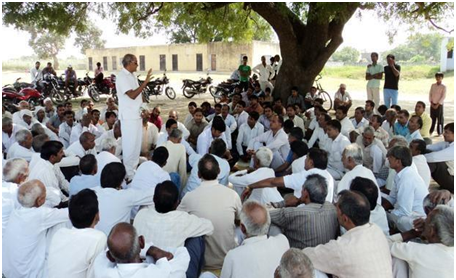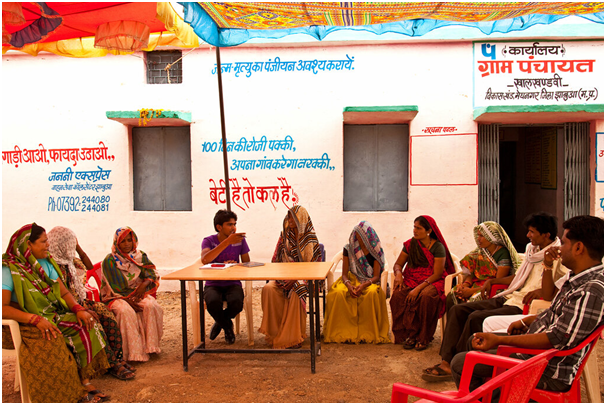Panchayat Governance in India
Context: Recently Panchayati Raj day was celebrated Marking a landmark law that came into effect on April 24, 1993, vested constitutional status on Panchayati Raj institutions.
What was the Constitution (73rd Amendment) Act of 1992?
- Before the act, India’s Constitution only mentioned a two-tier form of government and local institutions found mention only in Directive Principles of State Policy – which is not enforceable by courts or bound to be followed, only meant as a guiding document for governments.
- With a lack of focus here, absence of regular elections, insufficient representation of marginalised sections like Scheduled Castes, Scheduled Tribes and women, inadequate devolution of powers (transfer from a higher level of government to the lower levels) and lack of financial resources from the state and the Centre were some issues plaguing village-level governance.
- Several committees were constituted for studying these issues, such as the Balwant Rai Mehta Committee and the Ashok Mehta Committee, which gave important recommendations. In the late 1980s, then Prime Minister Rajiv Gandhi prioritised the issue and after cross-party support, the measure was finally passed in 1993.
- Being enshrined in law and an amendment to the Constitution meant these provisions could no longer be easily ignored. The 74th Amendment Act, passed in the same year, sought to look at local governance in urban areas and constituting municipal bodies.
What did the Act change?
- The Panchayati Raj Act not only institutionalised PRIs [Panchayati Raj Institutions] as the mandatory third tier of governance, it transformed the dynamics of rural development by giving a say to a large section of the people — significantly, women — in the administration of their localities.
- The act allowed the state government to devolve powers for such bodies to implement schemes for economic development and social justice, authorise a Panchayat to levy, collect and appropriate taxes, duties, and tolls and provide for making such grants-in-aid to the Panchayats from the Consolidated Fund of the State – a major move to help fund them.
- It mandated women’s representation in one-third of the seats. Women now constitute more than 45 per cent of the nearly three million panchayat and gram sabha representatives in the country, standing in contrast to their representation in the current Lok Sabha, at 14 per cent. Scheduled Caste and Scheduled Tribe groups were also mandated to be assigned seats in proportion to their presence in the population.
- A five-year term was fixed for representatives, with a procedure given for conducting timely elections.
- It also noted that the Governor of a State would constitute a Finance Commission to review the financial position of the Panchayats and then recommend to her what their requirements are, how they can be met, etc.
How can the act be evaluated now?
- The act has been instrumental in involving more and more people in the democratic processes at a grassroots level. As James Manor notes in The Oxford Companion to Politics in India, decentralisation generally results in more transparency between the government and the people, better grievance redressal and better information flow. Manor notes how civil servants can gain timely news about developing health concerns or outbreaks in rural areas, for example, to suggest intervention.
- However, he also noted that many of the initial worries – having to do with finances, real devolution and genuine representation of marginalised groups – remain.
- Too often, these are dependent on the approach of the political parties in states or a reluctance to cede power.
- The domain of local governments comes under the State List as per Schedule 7 of the Constitution. This meant, “The amendments had to suggest more things than they required of the states.” State governments’ varied responses have led to varying results of the act’s impact across India.
- In 2013, former MP Mani Shankar Aiyar headed a committee titled ‘Towards Holistic Panchayat Raj’ on evaluating the act 20 years after it came into effect. He also noted some steps to rectify these problems ranging from financial incentivisation of the states to encourage effective devolution to greater involvement of these bodies in district-level planning.
What else you should know- Gandhi’s vision
- The law on the governance of India’s villages was also a manifestation of one of Mahatma Gandhi’s central principles. He often championed the idea of a Panchayati Raj setup, where local people participate in the functioning of their villages – in improving the condition of schools, roadways and water bodies.
- Gandhi stated that after Indian independence from British rule in 1947, he wished for the Congress Party to transform into a volunteer organisation consisting of panchayat-like
What was the context of Gandhi’s quote on Panchayat?
- Gandhi’s quote, from a 1946 issue of the Harijan magazine, reads: “Independence must mean that of the people of India, not of those who are today ruling over them… Independence must begin at the bottom. Thus, every village will be a republic or Panchayat having full powers. It follows, therefore, that every village has to be self-sustained and capable of managing its affairs even to the extent of defending itself against the whole world.”
- In his various experiments against colonial forces and creating an alternative to their model of governance, Gandhi put forth values like ahimsa (non-violence) and satya (truth). But apart from ideology, he also gave practical steps for achieving true self-rule or swaraj. He said India must have panchayats, a setup where the village’s adults elect a council of five people and a head among them, as local representatives.
- Although, Gandhi clarifies this does not mean not taking any help from the outside world, but simply that each person must be so capable as to take care of their own basic needs in life in harmony with nature and those around them.
- This would mean contributing labour for public work like sanitation, growing food locally, creating a rotational force for guarding the village, ensuring education for all, wearing hand-spun khadi to promote local artisans, shunning intoxicants, etc.
| Practice Question
1. How do you think 73rd and 74th constitutional Amendment have changed the face of Local governance in India? |





